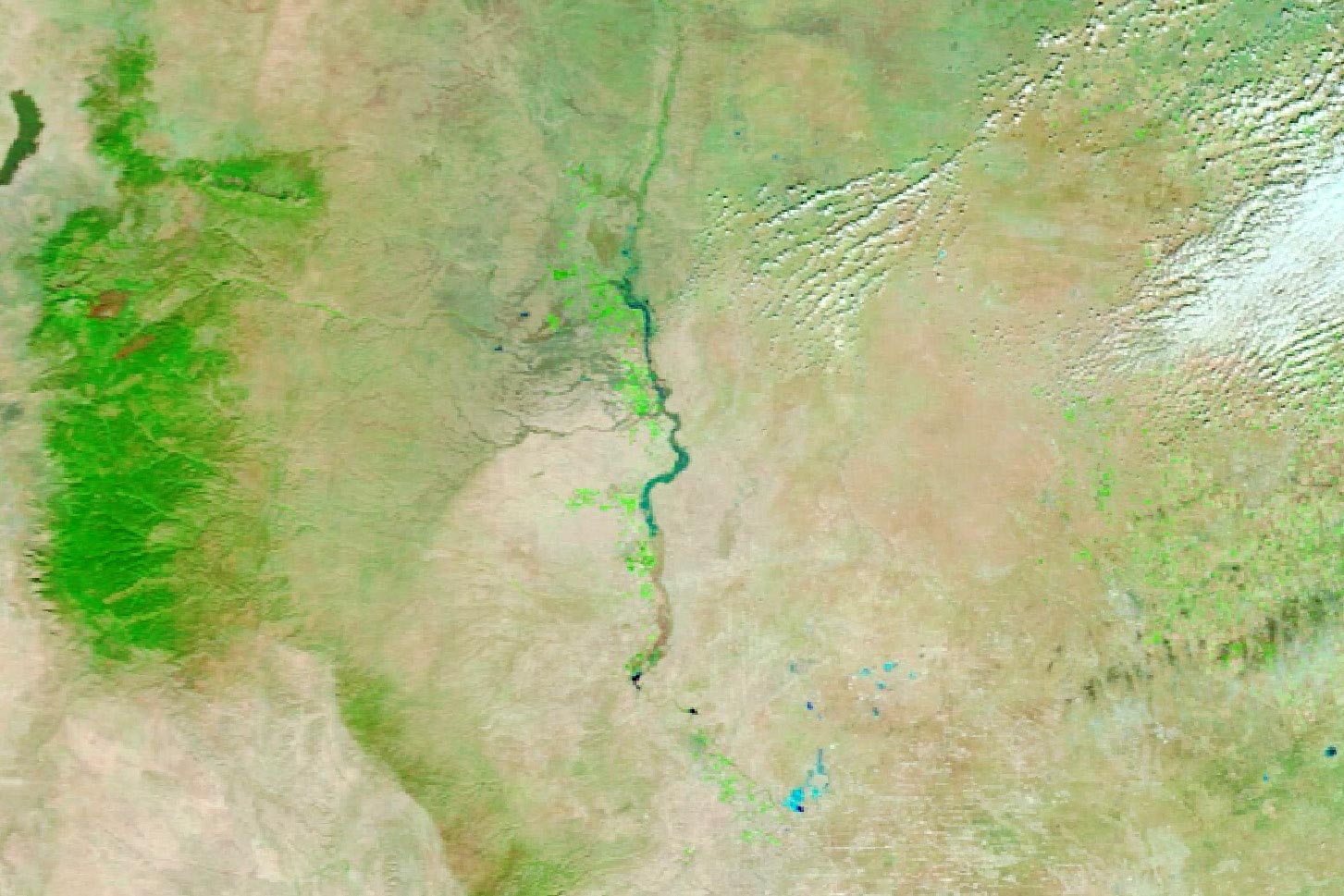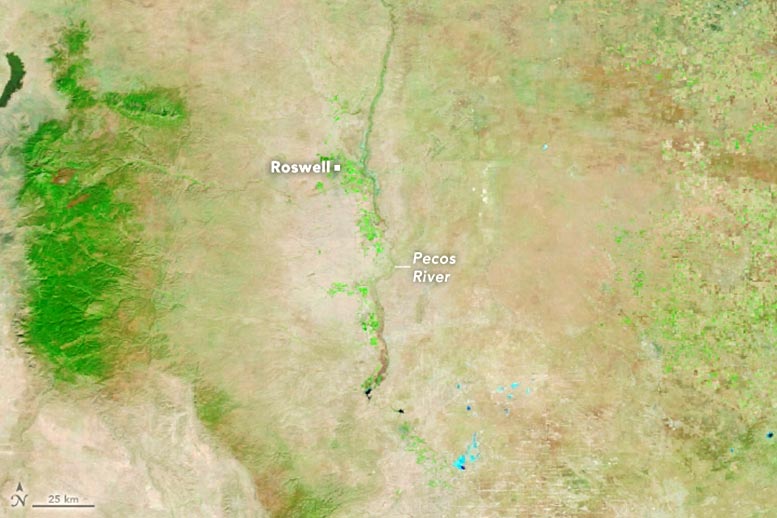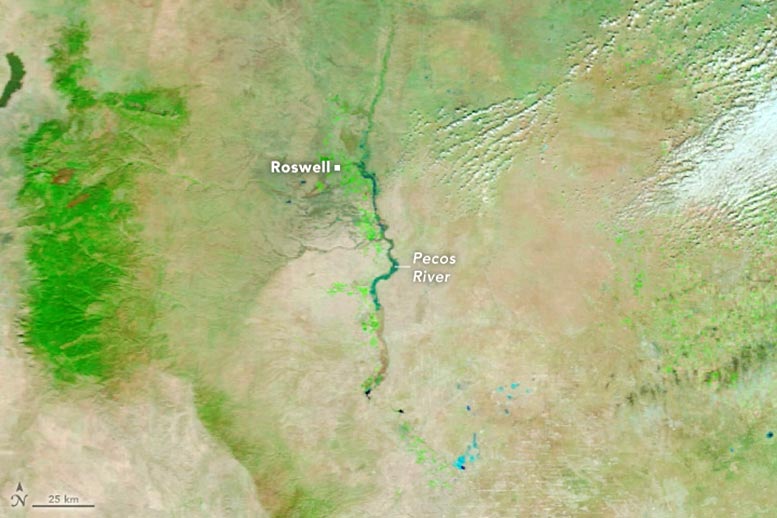


Record rainfall hit New Mexico in October 2024, causing severe flooding in Roswell, visible in NASA satellite imagery. The event, caused by a stalled upper-level weather system, resulted in significant damage and multiple rescues.
Unprecedented October Rainfall in New Mexico
Fall and summer are usually the rainiest seasons in New Mexico, but the downpour that hit parts of the state in late October 2024 was exceptionally intense.
The Albuquerque office of the National Weather Service reported that Roswell airport received 5.78 inches (147 millimeters) of rain on October 19, setting a new daily record. This amount is more than four times the area’s average rainfall for October and represents half of its typical annual total. Surrounding areas near Roswell saw even more, with up to 9 inches (229 millimeters) of rain falling within hours.
Satellite Images Reveal Flooding Impact
Most of the flooding in Roswell came from the Spring River, which flows through the city. By October 21, when NASA’s Terra satellite captured a clear image (lower image above), much of the water had receded, though floodwaters remained visible along the Pecos River, east of Roswell. Terra had taken another image (upper image above) on October 14, before the heavy rainfall. Both images were captured using the MODIS (Moderate Resolution Imaging Spectroradiometer) sensor.
The false-color images were composed from a combination of infrared and visible light (MODIS bands 7-2-1), to make it easier to distinguish the water. Floodwater appears dark blue; saturated soil is light blue; vegetation is bright green; and bare ground is brown.
Meteorological Causes and Consequences
The unusual amount of rain was produced by an upper-level cut-off low that stalled over Arizona and funneled large amounts of moisture to New Mexico from the Gulf of Mexico, according to meteorologist Jeff Berardelli. The flash floods that ensued caused widespread damage to the town of 48,000 people. Floodwaters inundated roads, swept away and submerged cars, and damaged bridges and buildings. Authorities rescued 290 people, according to a statement from the New Mexico National Guard.
National Weather Service forecasts indicate that storms could bring another round of flash flooding to Roswell in the coming days. Flood monitoring resources and tools powered by NASA satellite data include the Flood Dashboard from the NASA Disasters Program, the Global Flood Monitoring System from the University of Maryland, a data pathfinder from the Earth Science Data Systems Program, and flooding monitoring and modeling training from the Applied Remote Sensing Training Program.
NASA Earth Observatory images by Wanmei Liang, using MODIS data from NASA EOSDIS LANCE and GIBS/Worldview.